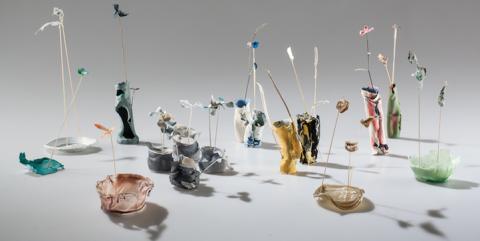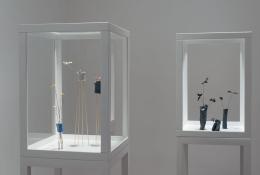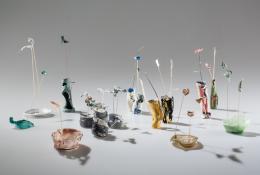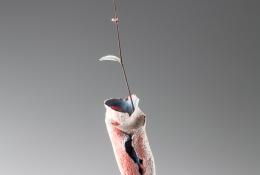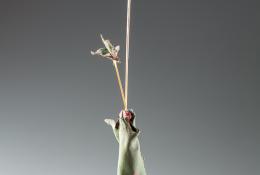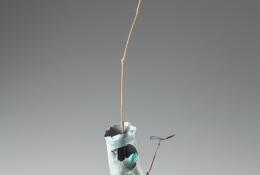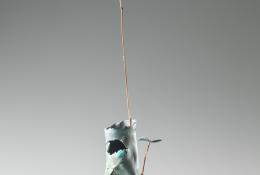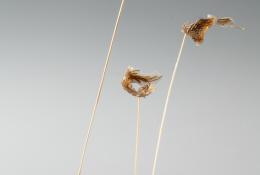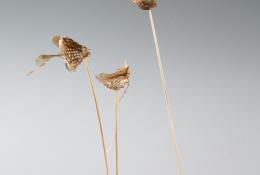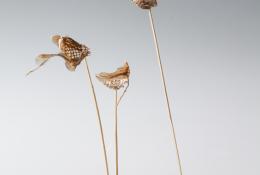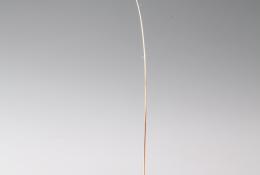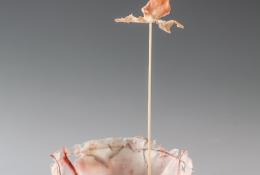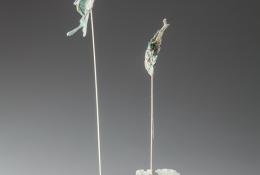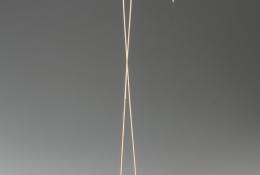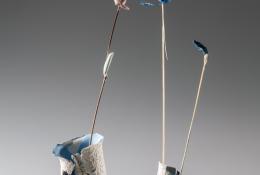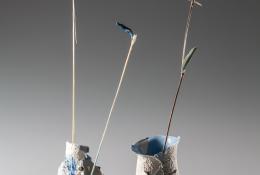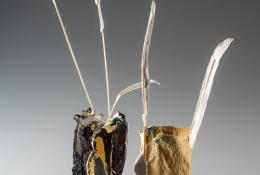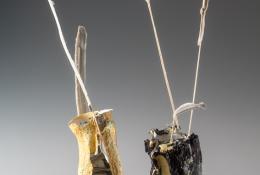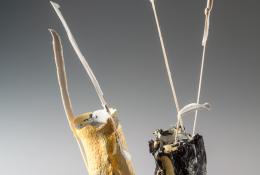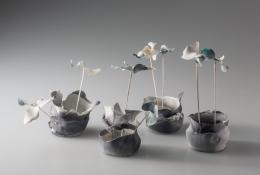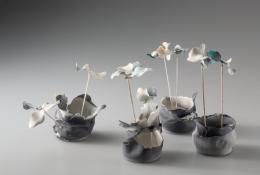Giardino d'Inverno
Aldo Grazzi
Giardino d'Inverno
with a text by
Annarosa Buttarelli
Caterina Tognon arte contemporanea
Ca' Nova di Palazzo Treves
Corte Barozzi | San Marco 2158
30124 Venice Italy
opening 18 March | 6 pm | 8 pm
19 March | 15 May 2016
The exhibition consists of the artist's latest cycle of sculptures, made of plaster and collected under the title Giardino d'Inverno (Winter Garden). The works are presented in wooden and glass cases to protect the delicacy of the elements that form them. These are classical materials such as Bologna plaster and animal glues, subtle plant elements and fragments of canvas, which form blossoming inflorescences between the body-vases from which they seem to spring. While evoking the canonical representation of the flower vase, these sculptures seem to form naturally from what remains of a previous season, from the remains of corrupted vases and withered natures. They are therefore not still lifes but rather resurrected natures. The renewed beauty comes from a long period of planting, from lethargy, from abandonment, which now manifests itself in the capacity for life expressed in the new form.
We are in front of a song to the fragility of life, reconquered and traversed from a new beginning guarded by unexpected and mysterious relationships, celestial and terrestrial. A humble, elegant homage to the precedence of nature and the cosmos. A confident assent, given by an artist of rare ability and sensitivity, to the infinite flowing of life and its reasons, which are also fragile but perfect.
Annarosa Buttarelli
The evolution of the forms seems to be governed by paths that tend towards the curvilinear, but if natural motions can be one of the possible references to suggest, it must be made clear that this is not a descriptive appeal to nature so much as an appropriation of its generating forces. Forces that are then guided towards objectives referable to the sculptural dimension. Solids and voids alternate in ever-changing ways, creating interactions between moments of order and partial disorder. The surprise of this flow of forms, slender and fragile, makes the multiple references to 20th century Italian sculpture, evoked as in a barely perceptible reverberation, extremely blurred. The plastic conformations place a sense of lightness and fragility at the centre, further emphasised by the choice of small dimensions. It is possible to perceive the fantasy of continuous evolutions in slender paths, always different, each with its own specificity and structural characteristics but always in a reference to the fascination of the provisional...
Guido Molinari
The exhibition bears witness to the artist's renewed interest in sculpture. Thus, slender and balanced small sculptures that mimic, at the same time with seriousness and irony, possible declinations of reality appear on view. In these works, too, lightness becomes a constituent element of the whole, combining with new expressive possibilities of the work, due to the delicate presence of colour and the precise reference to the figuration of the vase, the bearer of floral beauty. More than ever, the image supports a futile epiphanic appearance, which seems to be generated, as in the ancient iconic tradition, on the thin border between the waking and the imaginary. Aldo Iori
Some works of art, as well as some artists, are curiously destined to cross time, almost as if their existence had never been marked by the pursuit of contemporaneity in order to be recognised, as much as to conceal with it or even to engrave it with an almost sublime and ferocious irony extraordinarily concealed in particularly poetic and apparently romantic forms, colours and thoughts.
They are those artists who, I think by an innate destiny, have always looked at man as an extraordinary inhabitant, as a calembour with whom to compare, to look at horizons and at the same time to share journeys and thoughts. Certainly because of their aptitude for "flying over" the precautions or, better still, the touchiness of the world, they have realised that not all the world, and I would say even less mankind, tolerates ironic lightness, the pleasure of the open, serene enigma, an enigma that does not even require an obligatory solution; in short, some works, like some artists, cannot rely on the immediate visibility that Worldliness seems to increasingly guarantee. If these works and these artists have instead, and always naturally, had doubt present and as their characteristic, the "search for a world they do not know", the Bontempellian attempt to find it and above all to reach it, well... then they are works of art and artists that will "Travel in Time". It is with this rather abstract and absolutely real concept that I met Aldo Grazzi.
Luca Massimo Barbero
